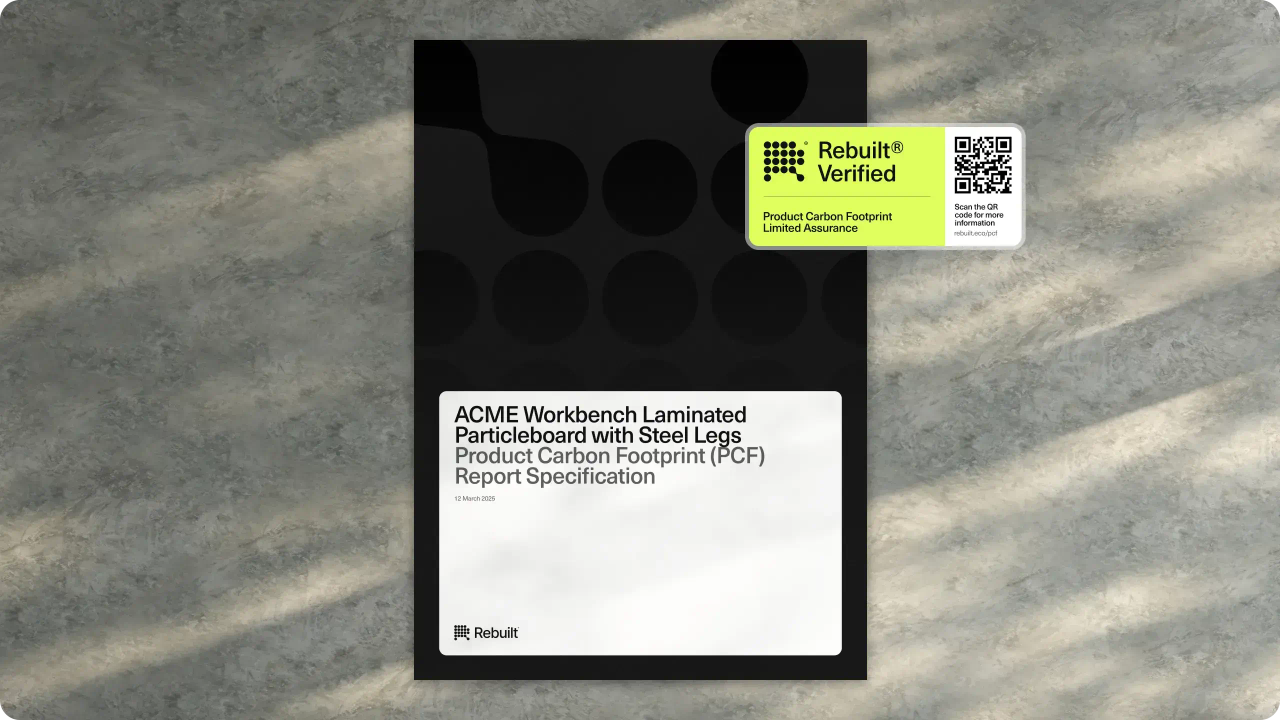How the world is reporting on embodied carbon
As the grid decarbonises, the impact of embodied emissions is becoming more of a focus for policymakers and corporations globally. This is true for all sectors, but especially so in the buildings and construction sector.
80% of an organisation's emissions come from its supply chain (scope 3) and the embodied emissions of products in the construction sector has a significant impact on this percentage, accounting for 7% of global emissions or 3.5 billion tonnes of CO2 annually.

Source: Will Arnold, Institution of Structural Engineers, 2025
In response to this challenge, several countries and jurisdictions have mandated or proposed mandatory reporting of Scope 3 emissions as part of their climate-related disclosure regulations:
European Union
From 2028, all EU member states will be required to report embodied carbon for major construction projects. By 2030, this requirement will be extended to all projects, accompanied by the introduction of specific embodied carbon limits. These measures are part of the broader effort to decarbonise the building sector. For further details on these requirements, visit the European Performance of Buildings Directive (EPBD) website: EPBD Website.
Additionally, the EU is implementing the Carbon Border Adjustment Mechanism (CBAM) to prevent carbon leakage and ensure fair competition. From 2026, importers of high-carbon goods (such as steel, cement, aluminium, fertilisers, electricity, and hydrogen) will need to purchase CBAM certificates equivalent to the EU carbon price under the Emissions Trading System (ETS). Exporters from non-EU countries must report embedded carbon emissions from 2023, with full enforcement by 2034. Countries with their own carbon pricing mechanisms may offset some CBAM costs, but they must provide verifiable documentation. This policy aims to level the playing field for EU industries and encourage global decarbonisation efforts.
For further details on these requirements, visit the European Performance of Buildings Directive (EPBD) website: EPBD Website and the European Commission’s CBAM page: CBAM Overview.
The Netherlands
Holland has been a pioneer in embodied carbon regulation, having mandated reporting since 2013. In 2018, the country introduced limits on embodied carbon emissions, which were further tightened in 2021. This proactive approach serves as a model for other nations considering similar regulations. For more details, visit: Dutch Embodied Carbon Policy.
France
France has implemented embodied carbon limits since 2022 under the RE2020 legislation, a significant step in regulating construction emissions. RE2020 is part of France’s broader sustainability goals to improve energy efficiency and reduce carbon footprints in the built environment. Read more about RE2020 here: French RE2020 Overview.
Finland, Denmark, Norway, and Sweden
The Nordic countries have implemented embodied carbon reporting legislation. Additionally, Denmark has introduced carbon limits, reinforcing its leadership in sustainable construction practices. A useful visual representation of regulatory progress can be found here: Nordic Policy Chart.
United Kingdom
The UK has proposed expanding its mandatory climate-related disclosures to include Scope 3 emissions, aligning with international reporting standards like those from the International Sustainability Standards Board (ISSB). On a local level, increasing numbers of UK local authorities are incorporating embodied carbon into their planning requirements. For an overview of UK local policies, see: UK Embodied Carbon Map
United States
Several U.S. states, including California, Colorado, New York, and Oregon, mandate embodied carbon reporting for specific construction materials. Collectively, these states represent an economic powerhouse, ranking as the world’s third-largest economy when combined. A comprehensive overview can be found in the Carbon Leadership Forum’s (CLF) document: CLF Embodied Carbon Policies
Canada
Several Canadian municipalities, including Vancouver and Toronto, have incorporated embodied carbon considerations into their planning processes. Additionally, the federal government has established embodied carbon requirements for its own facilities, signalling a growing national commitment to sustainable construction. Further details available here: Canada’s Embodied Carbon Policies.
Singapore
In Singapore embodied carbon assessments are optional under its sustainability framework. The country employs a points-based system similar to BREEAM, where conducting an embodied carbon assessment contributes to a project’s overall sustainability rating. While not mandatory, this approach incentivises lower carbon construction. More details can be found in the Code for Environmental Sustainability of Buildings: Singapore’s Sustainability Code.
Hong Kong
The Hong Kong Stock Exchange (HKEX) has introduced new climate disclosure requirements. Starting January 1, 2025, all listed companies are required to disclose Scope 1 and Scope 2 greenhouse gas (GHG) emissions. Disclosure of Scope 3 GHG emissions will be on a "comply or explain" basis for financial years commencing on or after January 1, 2025. For LargeCap issuers, Scope 3 disclosure becomes mandatory for financial years starting on or after January 1, 2026.
China
China's three major stock exchanges – the Shanghai Stock Exchange (SSE), Shenzhen Stock Exchange (SZSE), and Beijing Stock Exchange (BSE)—have issued sustainability disclosure guidelines for listed companies. These guidelines mandate the disclosure of Scope 1 and Scope 2 emissions. Disclosure of Scope 3 emissions is encouraged but remains conditional, depending on data availability.
Global voluntary frameworks requiring Scope 3 inclusions
Several best-practice sustainability reporting frameworks encourage or require calculation of scope 3 impacts in their reporting:
Global Reporting Initiative (GRI)
The GRI Standards, specifically GRI 305: Emissions, require organisations to disclose Scope 1, Scope 2, and Scope 3 emissions as part of their sustainability reporting. Scope 3 reporting is encouraged for a complete understanding of the organisation’s environmental impact.
Science Based Targets initiative (SBTi)
SBTi requires companies setting science-based targets to include Scope 3 emissions if they account for more than 40% of their total emissions. This ensures alignment with pathways to limit global warming to 1.5°C or 2°C.
Carbon Disclosure Project (CDP)
The CDP Climate Change Questionnaire includes a dedicated section on Scope 3 emissions, urging companies to report emissions across 15 categories defined by the Greenhouse Gas Protocol.
Global Real Estate Sustainability Benchmark (GRESB)
GRESB emphasises the need for comprehensive reporting of GHG emissions, including Scope 1 (direct emissions), Scope 2 (indirect emissions from purchased energy), and Scope 3 (all other indirect emissions). For real estate, this might include embodied carbon in construction materials, tenant energy use, waste, and transportation-related emissions.
As a result of this increasing international pressure, many multi-nationals and reporting frameworks are looking for least-cost verified carbon claims from their suppliers that comply with internationally consistent standards such as the GHG Protocol and ISO suite.
This is a rapidly evolving landscape. Know of more jurisdictions or rating systems, please get in touch info@rebuilt.eco


